Clues from Ancient Glacial and Interglacial Times
Temperature -3°C, wind 5 kts, 1 meter swells
Drilling at Site U1361
Position: 64º 24.6’S, 143º 53.2’E
Water Depth: 3470 meters
11 more days!
ABOARD THE JOIDES RESOLUTION, OFF THE COAST OF WILKES LAND, ANTARCTICA– Hi folks! We’ve been busy the past 9 days. We are coming to the end of our work window here in Antarctic. Summer has ended, the nights are much longer, and next Tuesday we must begin our transit back to Hobart, Australia.
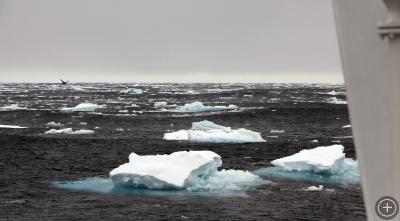
We made our last attempt to get into one of our continental shelf drilling sites but were stopped once more by sea ice. All of the ice here is frozen seawater as opposed to glacial ice.
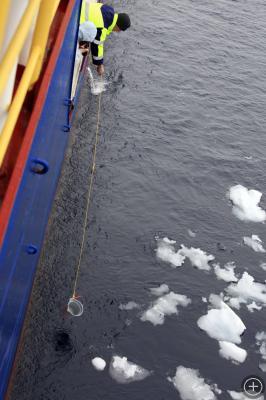
The sea ice is porous and inside the pores are salty brines that support plant and bacterial life. Here we are trying to collect so ice, but it’s a long way down to the water for this little bucket, especially when working from a moving ship.
We finished drilling deep into the seabed at Site U1359, encountering sediments and rocks that span much of the last 13 million years. For several hundred meters we found layers of rock that alternated between green and brown over distances of 2 to 4 meters. The green parts of the cycle showed evidence of intense mixing of the sediments by animals living at the seafloor while the brown parts showed something quite different – very well-developed laminations that could not have survived if the sediments were mixed. There were different materials in the layers too – some contain more shells of diatoms, the main plant in the surface waters of the ocean. We don’t yet know what these cycles of green and brown represent but we think they reflect the continued glacial-interglacial cycling of the Earth’s climate many millions of years ago.
Today we are in a very cold period in the long-term history of the Earth, and have been for most of the past several million years. Because the Earth is already quite cold, when we have glacial-interglacial cycles, we see large ice sheets coming and going at both poles – in Antarctica, Greenland, and over large parts of North America and Scandinavia. This waxing and waning of polar ice is driven by small changes in the shape of the Earth’s orbit around the sun (it changes from an ellipse to more circular and back again over about 120,000 years), the tilt of the Earth’s axis (it wobbles a bit over 40,000 years), and the exact seasonal timing of when the Earth is at its closest approach to the sun. All of these “orbital” changes impact how much sunlight reaches the Earth as well as when and where it warms the Earth seasonally. Sometimes, the Earth is in an orbital configuration that produces warm winters and cool summers – a combination that usually allows ice sheets to form and grow. Some 10’s of thousands of years later, the opposite occurs – warm summers and cool winters – which can cause ice sheets to rapidly melt. In today’s cold world, these small changes have big effects as the Polar Regions are cold enough to allow large ice sheets to form and last through the warmer periods. Antarctica has been covered in a large ice sheet for many millions of years because of this overall cooling. It still waxes and wanes along its margins but it is always present in the continent’s interior. But prior to about 2.5 million years ago, there was no permanent ice sheet in the north polar regions – it was simply too warm. Further back in time, the Antarctic ice sheet was much smaller than it is today but it was still dancing to the rhythms set by the Earth’s orbit.
What we were seeing at our last drill site and what we are looking for at our latest site is evidence of how these glacial-interglacial cycles affected the Southern Ocean and how they in turn may have been different because the planet was a little bit warmer than today. By studying this we can learn more about how small changes in the planet’s temperature can affect things like ice volume, sea ice extent, and the productivity of the ocean. This is directly relevant to understanding our Greenhouse future. Although all the climate variability that occurred millions of years ago was “natural” (in other words, not caused by people), the strength of the signal that caused these past changes (the orbital changes in this case) is not very different from the strength of the signal we expect from the man-induced increase in carbon dioxide levels in the atmosphere.
The poles are a great place to study both natural and man-induced changes in Earth’s climate because of a phenomenon called polar amplification. We know from many hundreds of studies of the past 50 million years of climate change that whenever the Earth warms up, the poles warm up more than the planet’s average. The converse is true for times of cooling. We don’t yet fully understand the reasons why but based on these studies of the past we shouldn’t be surprised that the poles are warming up very quickly today, at a rate greater than what we see in the tropics or the temperate belts. The cores we collect on this trip have the potential to tell us more about when and why polar amplification occurs.
I’ll send one more blog from this trip once we have cleared our last hole and are heading for Hobart. Sixty days is a long time to be as sea and working every day for 14 hours or more. We are all excited to get home.
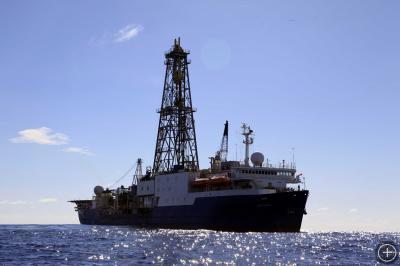
I had a chance to get off the JOIDES Resolution a couple of days ago when we were running a “man overboard” drill. We recovered the dummy and then I was able to take these shots. It was our warmest, sunniest, calmest day by far. You’d never know we were in Antarctic waters.
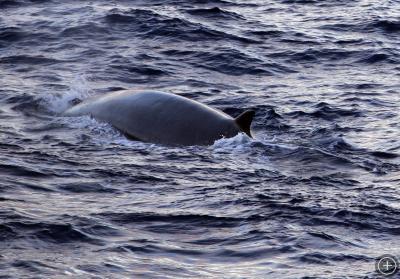
We’ve been seeing lots of whales at our continental rise sites. The whales come to Antarctic waters in summer because of the abundance of food.
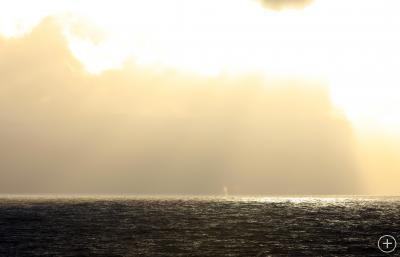
At dawn one day, we had more than 35 Humpback whales around the ship. From a distance you usually first see their spout, which you can make out here.


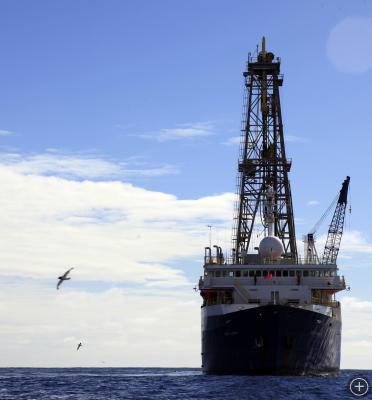



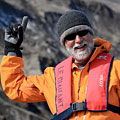






Greetings, Rob. This looks a lot dicier than our Galapagos expedition. – alex
Thanks for the work you are doing. It is most helpful and quite informative. I was working on the some of the problems you described about the lack of knowledge in the field however after being denied admission and then expelled from school acquiring and disseminating knowledge became ever more difficult, if not impossible. It is reassuring to know there are people out there who continue to work on these problems. I wish the best of luck although that may or may not be a factor in work. Thanks for everything. Scott
I really appreciate your detailing how Earth orbit changes effect the polar ice sheets as well as the polar amplification effect on our climate. Hadn’t ever heard it described this way. Now I understand more. Thank you!!!